釈迦の悟りとは 仏教の開祖が明かす人生の智慧 その生涯と人類の遺産

The Enlightenment of Buddha: Wisdom Revealed by Buddhism’s Founder – His Life and Humanity’s Legacy
イントロダクション
釈迦が悟りを開いた瞬間は、仏教の核心に触れる重要な転機であり、彼の教えは今も人々に深い影響を与えています。
この記事では、仏教の開祖である釈迦の生涯をたどり、彼が得た智慧とその教えが人類の遺産としてどのように受け継がれているかを探ります。
釈迦の教えは、苦しみからの解放と心の平穏を求めるすべての人に対して、光となる知見を提供しています。
Introduction
The Moment of Buddha’s Enlightenment: A pivotal turning point at the core of Buddhism, his teachings continue to profoundly influence people today.
In this article, we trace the life of Gautama Buddha, the founder of Buddhism, exploring the wisdom he gained and how his teachings have become a legacy for humanity.
Buddha’s teachings offer profound insights, serving as a beacon of light for all seeking liberation from suffering and inner peace.
釈迦:仏教の開祖としての歴史的背景
釈迦は紀元前6世紀にインドで生まれました。
彼の本名はシッダールタ・ガウタマで、王族の家に生まれながらも、人生の苦悩に対する答えを求めて家を出たことで知られています。
若き日々において、彼は瞑想や苦行を通じて真理を探求しましたが、これらの修行だけでは悟りに至らないと悟ります。
その後、菩提樹の下で深い瞑想に入り、究極の真理とされる「悟り」を開いたとされています。
この瞬間が、仏教の開祖としての釈迦の始まりであり、彼は「仏陀」として知られるようになりました。
仏教は釈迦の教えに基づく宗教であり、苦しみの原因とそれを克服する方法を説くものです。
釈迦は、すべての存在は苦しみから解放されることができると説き、そのための八正道を提唱しました。
また、彼の教えは四諦としてまとめられ、仏教徒にとっての実践的な指針となっています。
釈迦の歴史的背景は、当時のインド社会が厳格な階級制度に縛られていたことにも関連しています。
彼の教えは、階級や身分に関係なく、すべての人が悟りを得ることができるという普遍的なメッセージを持っていました。
これは、多くの人々にとって新たな希望となり、仏教が広まる大きな要因となりました。
仏教の開祖としての釈迦の教えは、今日においても世界中で尊重され、多くの人々によって実践されています。
彼の生涯と悟りの体験は、心の平和を求める人々にとって永遠の指針となっており、哲学的な探求だけでなく、実践的な生き方のモデルとしても重要な意味を持っています。
釈迦の生い立ちと若き日々
釈迦は紀元前6世紀頃、現在のネパールに近いルンビニの地で生まれました。
彼の本名はシッダールタ・ゴータマで、父はシャカ族の王でした。
幼い頃から賢明であり、多くの学問に秀でていたと伝えられます。
しかし、彼が29歳の時、外の世界に目を向けた際、病苦、老い、死といった人間の苦悩に直面し、これらからの解放を求めて出家を決意しました。
シッダールタは様々な修行を経て、35歳の時、菩提樹の下で深い瞑想に入り「悟り」という究極の真理に到達しました。
この時から彼は「釈迦牟尼仏」として知られるようになり、仏教の教えを広め始めました。
彼の教えは「四諦」と呼ばれ、苦しみの原因とそれを克服する道筋を示しています。
釈迦は80歳で入滅するまで、多くの弟子に教えを伝え、仏教はインドを超えてアジア各地に広まっていきました。
釈迦の教えは、煩悩を捨て、中道を歩むことで悟りに至るというものでした。
彼は、人々が苦しみから解放されるための手段として八正道を説きました。
これらの教えは後世に大きな影響を与え、今日に至るまで多くの人々に実践されています。
釈迦の生涯は、仏教の開祖としてだけでなく、人間としての苦悩を乗り越えた一人の偉大な哲学者としても記憶されています。
Title and Introduction
Title: “Gautama Buddha: Historical Background of Buddhism’s Founder”
Introduction: Gautama Buddha, born in India in the 6th century BCE, embarked on a journey seeking answers to life’s suffering despite being born into royalty. He explored meditation and asceticism in his youth but realized that these practices alone did not lead to enlightenment. It was under the Bodhi tree where he achieved ultimate truth, known as “enlightenment,” marking the beginning of his role as the founder of Buddhism. His teachings, encapsulated in the Four Noble Truths and the Eightfold Path, offer practical guidance for all to overcome suffering and find inner peace. Buddha’s historical context is intertwined with India’s strict caste system, yet his universal message of enlightenment transcended social divisions, offering new hope and contributing significantly to Buddhism’s spread worldwide. Today, Gautama Buddha’s life and insights into enlightenment continue to serve as an eternal guide for those seeking inner peace and a practical model for living.
Early Life and Enlightenment of Gautama Buddha
Gautama Buddha was born around the 6th century BCE in Lumbini, near present-day Nepal. His birth name was Siddhartha Gautama, and his father was a king of the Shakya clan. From a young age, he was known for his wisdom and excellence in various fields of learning. However, at the age of 29, Siddhartha encountered the realities of human suffering—sickness, old age, and death—prompting him to renounce his princely life in pursuit of liberation from these hardships. Siddhartha underwent rigorous ascetic practices before finally, at the age of 35, achieving enlightenment under the Bodhi tree. This transformative experience marked the beginning of his journey as the Buddha, or “Awakened One,” and he began teaching the principles encapsulated in the Four Noble Truths to others. Gautama Buddha’s teachings centered on the Middle Way—a path to enlightenment by abandoning worldly desires and following the Eightfold Path. His teachings continue to influence countless individuals, offering a profound approach to overcoming suffering and attaining spiritual liberation. Until his passing at the age of 80, Gautama Buddha imparted his teachings to numerous disciples, and Buddhism subsequently spread beyond India to various parts of Asia. His life not only defined him as the founder of Buddhism but also as a philosopher who transcended human suffering, leaving an enduring legacy that resonates to this day.

The Scene Where Siddhartha Becomes a White Elephant in His Mother’s Womb
悟りへの道:釈迦の修行と転機
釈迦は、紀元前6世紀のインドに生まれた歴史的人物であり、仏教の開祖として広く知られています。
彼の本名はシッダールタ・ゴータマといい、幼少期から豊かな生活を送っていましたが、若き日々に出会った病、老い、死の現実に衝撃を受け、真理を求める旅に出ます。
修行の旅は厳しいものでした。
釈迦は様々な苦行を経験し、多くの師から学びを受けましたが、それらは彼の心に満足を与えることはありませんでした。
決定的な転機は、菩提樹の下での深い瞑想の末、彼が「悟り」という究極の真理を見出した瞬間でした。
この体験によって釈迦は仏陀となり、後に彼の教えが仏教として広まることになります。
悟りとは、苦しみの本質とその克服の道を理解することです。
仏陀はこの知見を四諦と八正道という教えにまとめ、人々が苦しみから解放される道を示しました。
仏教の開祖としての釈迦の教えは、現在も世界中で実践されており、多くの人々に平和と慈悲の精神をもたらしています。
The Path to Enlightenment: Siddhartha’s Journey of Practice and Transformation
Siddhartha, a historical figure born in 6th century BCE India, is widely recognized as the founder of Buddhism.
Born as Siddhartha Gautama, he lived a privileged life in his early years but was deeply affected by the realities of sickness, aging, and death when he encountered them in his youth. This prompted him to embark on a quest for truth.
His journey of practice was rigorous. Siddhartha underwent various ascetic practices and learned from many teachers, yet none satisfied his quest for fulfillment.
The decisive turning point came after deep meditation under the Bodhi tree, where he attained the ultimate truth known as “enlightenment.” This experience transformed Siddhartha into the Buddha, and his teachings subsequently spread as Buddhism.
Enlightenment entails understanding the essence of suffering and the path to overcoming it.
The Buddha encapsulated this wisdom in his teachings known as the Four Noble Truths and the Eightfold Path, offering a way for people to attain liberation from suffering.
The teachings of Siddhartha as the founder of Buddhism continue to be practiced worldwide today, bringing peace and compassion to many.
仏陀としての悟り:その意味と教え
仏陀としての悟りは、釈迦が体験し、その後教えを広めることになった重要な概念です。
釈迦は仏教の開祖として知られ、彼が体験した「悟り」とは、真理を見抜くことであり、苦しみからの解放を意味しています。
この悟りは、仏教徒にとって究極の目標であり、人々が解脱を達成するための精神的な覚醒とされています。
「悟りとは」を深く理解するためには、仏教における悟りの本質を掘り下げる必要があります。
悟りは、無知の状態から抜け出し、宇宙と生命の真実を直観的に理解することを指します。
釈迦は瞑想と厳しい修行を通じて悟りを開き、その経験を通して四聖諦と八正道を説きました。
四聖諦は苦しみの真実を説明する教えであり、苦(苦しみが存在する)、集(苦しみの原因)、滅(苦しみの終わり)、道(苦しみを終わらせる道)の四つから成り立っています。
八正道は、正見、正思惟、正語、正業、正命、正精進、正念、正定の八つの実践を通して、苦しみを終わらせるための具体的な道筋を示しています。
これらは悟りへの道しるべとされ、仏教徒は日々の生活の中でこれらの教えを実践することで、悟りに近づくとされています。
悟りを追求することは、自己の内面と向き合い、心を浄化する旅であり、釈迦の教えは今日においても多くの人々にとって価値ある指針となっています。
仏教における悟りの探求は、単に宗教的な目標に留まらず、人間としての成長や内なる平和を見つけるための普遍的な旅路と言えるでしょう。
Enlightenment as the Buddha: Its Meaning and Teachings
Enlightenment as understood by the Buddha is a crucial concept that Siddhartha Gautama experienced and subsequently disseminated through his teachings.
Known as the founder of Buddhism, Siddhartha’s “enlightenment” refers to the discernment of truth and liberation from suffering.
For Buddhists, enlightenment is the ultimate goal—a spiritual awakening enabling individuals to achieve liberation.
To grasp the essence of “enlightenment,” one must delve into its core in Buddhist philosophy.
Enlightenment involves transcending ignorance and intuitively understanding the truths of the universe and life.
Through meditation and rigorous ascetic practices, Siddhartha attained enlightenment and expounded the Four Noble Truths and the Eightfold Path.
The Four Noble Truths explain the truth of suffering—its existence, cause, cessation, and path to cessation.
The Eightfold Path outlines the practical steps—right view, right intention, right speech, right action, right livelihood, right effort, right mindfulness, and right concentration—to end suffering.
These serve as guideposts on the path to enlightenment, and Buddhists strive to practice these teachings in their daily lives to approach enlightenment.
The pursuit of enlightenment involves confronting one’s inner self and embarking on a journey of purifying the mind. Siddhartha’s teachings remain valuable guidance for many people today.
The quest for enlightenment in Buddhism transcends mere religious goals, representing a universal journey toward personal growth and inner peace.
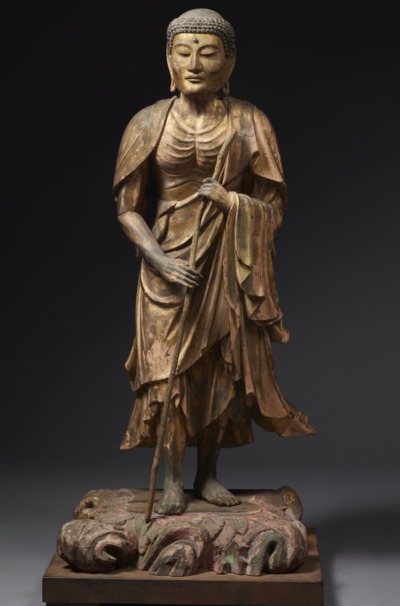
Statue depicting Buddha emerging from the mountain after six years of austerity, created between the 15th and 16th centuries during the Muromachi period, housed at the Nara National Museum.
悟りとは:仏教における悟りの本質
釈迦(しゃか、またはゴータマ・シッダールタ)は仏教の創始者であり、その思想は東洋哲学や宗教に大きな影響を与えています。
釈迦の生涯と教えには深い哲学的洞察があります。
釈迦はインドの王族の子として生まれ、幸福な生活を送っていましたが、ある日、老齢、病気、死の存在を知り、人間の苦しみに目を向けました。
この苦しみと不安に対処するため、彼は家族と世俗の生活を捨て、苦行修行に身を捧げました。
長い修行の末、彼は啓示を得て、悟りを開きました。
これが彼の啓発された状態である「仏性」(ブッダ)でした。
彼の啓示から、彼は「四つの偉大な真理」または「四つの貴重な真理」として知られる「四諦」を見出しました。
まず、すべての生には苦しみがあり、これは「苦諦」です。
次に、この苦しみは欲望や執着に由来することを示す「集諦」があります。
そして、この苦しみから解放される方法、つまり苦しみからの解放が可能であることを示す「滅諦」、最後にそれを実現するための「道諦」があります。
釈迦の思想は「八正道」に集約され、これは倫理、瞑想、知恵の実践を通じて苦しみから解放される方法を示しています。
八正道には正見、正思考、正語、正行、正業、正精進、正念、正定が含まれます。
これらの要素は、個人がより意識的で責任ある生活を送るための指針を提供しています。
釈迦の教えは個人の解放、つまり「涅槃(ねはん)」または「解脱」として知られる究極の目的に焦点を当てています。
これは無欲、無執着、そして悟りを開いた状態であり、循環する輪廻からの解放を意味します。
彼の教えはまた、慈悲と思いやりに満ちた生き方を奨励し、他者への利益と幸福の追求を重視しています。
釈迦の教えは時間とともに異なる学派に分かれ、異なる解釈が加えられてきました。
上座部仏教、大乗仏教、密教など、多くの仏教の枝が彼の教えを基にしています。
それぞれの学派や宗派は、教えの焦点や実践方法において微妙な違いがありますが、釈迦の核となる哲学的原則、すなわち苦しみの理解と解脱への道の追求は共通しています。
最後に、釈迦の教えは時代を超えて、人々の心と精神に深い影響を与えています。
彼の哲学は人々に智慧と平和をもたらし、自己の苦しみや他者の苦しみに対処するための普遍的な指針を提供しています。
釈迦の教えは人間性の探求と道徳的な生き方のための価値ある源泉であり、多くの人々に永遠の真理と希望をもたらしています。
四聖諦と八正道:悟りへの道しるべ
仏陀としての悟りを得るためには、仏教の基本的な教えである四聖諦と八正道を理解することが不可欠です。
釈迦、すなわち仏陀は、人間の苦しみの本質を悟り、その解脱の道を示しました。
この悟りとは、現実をありのままに見ること、そしてその真理を体得することを意味します。
悟りとは、単に知識を得ることではなく、深い理解と実践を通じて心を浄化し、煩悩から解放される経験を指します。
仏教の開祖である釈迦は、この悟りを得るための具体的な指針として四聖諦を説きました。
これには苦(苦諦)、苦の原因(集諦)、苦の終わり(滅諦)、そして苦の終わりに至る道(道諦)が含まれます。
八正道は、苦の終わりに至るための実践的なステップを示しており、正見、正思惟、正語、正業、正命、正精進、正念、正定を含んでいます。
これらは、倫理的な生活、精神的な訓練、そして智慧の開発を促すものであり、仏陀が示した悟りへの道しるべとなります。
仏教の教えを日常生活に取り入れることで、私たちは心の平穏を得て、真の幸福へと近づくことができます。
四聖諦と八正道を深く理解し、それを実践することは、釈迦が教えた悟りへの道を歩むための第一歩です。
Enlightenment in Buddhism: The Essence of Awakening
Shakyamuni (also known as Siddhartha Gautama) is the founder of Buddhism, and his philosophy has profoundly influenced Eastern philosophy and religion.
Born into royalty in ancient India, Shakyamuni lived a privileged life. However, one day he encountered the realities of old age, sickness, and death, prompting him to contemplate human suffering.
In response to this suffering and existential angst, he renounced his family and worldly life to embark on a path of ascetic practices.
After years of rigorous asceticism, he attained enlightenment through profound meditation. This enlightened state, known as “Buddhahood,” revealed to him the “Four Noble Truths,” which are considered fundamental truths in Buddhism.
Firstly, there is the truth of suffering (dukkha). Secondly, suffering arises from craving and attachment (samudaya). Thirdly, it is possible to end suffering (nirodha). Lastly, the path leading to the cessation of suffering (magga) was discovered.
Shakyamuni’s teachings were distilled into the “Eightfold Path,” which outlines the practical steps to liberation through ethical conduct, mental discipline, and wisdom.
These teachings provide guidance for individuals seeking inner peace and ultimate liberation, known as “nirvana,” from the cycle of rebirth.
Shakyamuni’s philosophy encourages a compassionate way of living, emphasizing the welfare and happiness of others.
His teachings have branched into various Buddhist traditions over time, each interpreting and practicing his core philosophical principles, focusing on understanding suffering and the path to liberation.
Ultimately, Shakyamuni’s teachings continue to profoundly impact human hearts and minds, offering universal guidance for personal growth, moral living, and eternal truths.
The Four Noble Truths and the Eightfold Path: Guide to Enlightenment
To attain enlightenment as Buddha did, it is essential to understand the fundamental teachings of Buddhism: the Four Noble Truths and the Eightfold Path.
As Buddha, Shakyamuni realized the essence of human suffering and revealed the path to liberation.
Enlightenment means seeing reality as it is and embodying its truth through deep understanding and practice.
Enlightenment is not merely acquiring knowledge but experiencing purification of the mind and liberation from afflictions.
Shakyamuni, the founder of Buddhism, expounded the Four Noble Truths as specific guidelines to achieve this enlightenment.
These truths encompass suffering (dukkha), the origin of suffering (samudaya), the cessation of suffering (nirodha), and the path leading to the cessation of suffering (magga).
The Eightfold Path illustrates practical steps towards the cessation of suffering: right view, right intention, right speech, right action, right livelihood, right effort, right mindfulness, and right concentration.
These elements promote ethical living, mental cultivation, and the development of wisdom, serving as the path to enlightenment as taught by Buddha.
Incorporating Buddhist teachings into daily life allows us to attain peace of mind and approach true happiness.
A deep understanding and practice of the Four Noble Truths and the Eightfold Path are the first steps towards walking the path to enlightenment, as taught by Buddha.

The Bodhi Tree of Gautama Buddha at the Mahabodhi Temple in Bodh Gaya
仏教の開祖、釈迦の教えとその普遍性
釈迦、またはゴータマ・シッダールタは、紀元前6世紀に生きた仏教の開祖です。
彼の教えは、人々が苦しみから解放されるための道を示すものとして、今なお世界中で広く受け入れられています。
釈迦が悟りを開いた後、彼は四諦と八正道を説き、これらは仏教の中核的な教義となりました。
四諦は苦の存在、苦の原因、苦の終息、そして苦の終息への道を示すものであり、八正道は正しい見解、正しい思考、正しい言葉、正しい行動、正しい生活、正しい努力、正しい念、正しい定を通じて苦を克服するための実践的な指針です。
釈迦の教えは、個人の内面的な変化だけでなく、社会全体にも影響を与えました。
非暴力、慈悲、平等といった価値観は、多くの文化や宗教的伝統に影響を与えてきました。
また、仏教は精神的な発展だけでなく、教育や芸術、哲学などの分野にも深い影響を及ぼしています。
現代社会では、仏教の教えがストレスや人間関係の問題に対処するための方法として再評価されています。
瞑想やマインドフルネスといった実践は、心の平穏を求める人々にとって有益なツールとなっています。
仏教の智慧は、物質的な豊かさだけでは得られない内面の平和を求める現代人にとって、貴重な指針を提供しています。
仏教の開祖である釈迦の教えは、時を超えて普遍的な真理を語りかけるものです。
悟りとは、真実の理解と心の解放を意味し、これは今日の忙しい世界で生きる私たちにとっても、変わらぬ価値を持ち続けています。
釈迦の教えが世界に与えた影響
釈迦、またはゴータマ・シッダールタは、紀元前5世紀に生まれた仏教の創始者です。
彼が悟りを開いた後、仏陀として知られるようになり、その教えはやがて世界中に広まりました。
釈迦の教えの中核には、苦しみの原因とそれを克服する方法が説かれており、これが「四諦」として知られています。
また、八正道は倫理的な生活を送るための実践的な指針を提供します。
仏教が誕生したインドを起点に、その教えはアジア全域に広がり、多様な文化や社会に深く根を下ろしました。
中国、日本、韓国、ベトナムなどの国々では、仏教が芸術、文学、哲学、社会秩序に大きな影響を与えてきました。
また、瞑想やマインドフルネスといった実践は、ストレス管理や精神的な平和を求める現代人にとっても魅力的なものとなっています。
仏教の教えは、非暴力と共感の重要性を強調します。
これは国際的な平和活動や社会正義の運動においても重要な役割を果たしており、マハトマ・ガンジーやマーティン・ルーサー・キング・ジュニアなどの指導者たちは、仏教の原則に触発されたと言われています。
現代社会では、仏教の智慧は心理学やカウンセリングの分野でも取り入れられています。
苦しみを理解し、それを乗り越えるための手法として、仏教の教えは人々の生活に具体的な変化をもたらしています。
仏教の普遍的な価値観は、多くの人々がより意味のある人生を追求するための指針となっています。
釈迦の教えは、単なる宗教的な体系を超え、人類共通の価値を提供するものとなっています。
悟りの追求は、個人の内面的な成長だけでなく、世界的な規模での調和と平和への道を照らし出しています。
その普遍性と実践的なアプローチは、時代を超えて多くの人々に影響を与え続けています。
The Teachings of Shakyamuni Buddha and Their Universality
Shakyamuni, also known as Gautama Siddhartha, is the founder of Buddhism who lived in the 6th century BCE.
His teachings, which provide a path for liberation from suffering, are widely accepted worldwide even today.
After attaining enlightenment, Shakyamuni expounded the Four Noble Truths and the Noble Eightfold Path, which became the core doctrines of Buddhism.
The Four Noble Truths elucidate the existence of suffering, its causes, its cessation, and the path leading to its cessation. The Noble Eightfold Path provides practical guidelines through right view, right thought, right speech, right action, right livelihood, right effort, right mindfulness, and right concentration to overcome suffering.
Shakyamuni’s teachings have impacted not only individual inner transformation but also society at large.
Values such as non-violence, compassion, and equality have influenced numerous cultures and religious traditions.
Moreover, Buddhism has deeply influenced fields such as education, arts, and philosophy, alongside spiritual development.
In contemporary society, Buddhist teachings are being reevaluated as methods to address stress and interpersonal issues.
Practices like meditation and mindfulness serve as beneficial tools for those seeking inner peace.
The wisdom of Buddhism offers valuable guidance for modern individuals in pursuit of inner peace that material wealth alone cannot provide.
The teachings of Shakyamuni Buddha, the founder of Buddhism, resonate as timeless truths transcending eras.
Enlightenment signifies understanding reality as it is and achieving liberation of the mind, holding enduring value for us in today’s hectic world.
The Impact of Shakyamuni Buddha’s Teachings on the World
Shakyamuni, or Gautama Siddhartha, born in the 5th century BCE, is the founder of Buddhism.
After attaining enlightenment, he became known as the Buddha, and his teachings eventually spread worldwide.
At the core of Shakyamuni’s teachings are the Four Noble Truths, which outline the nature of suffering and the method to overcome it.
Additionally, the Noble Eightfold Path provides practical guidelines for living an ethical life.
Originating in India, Buddhism spread across Asia, deeply embedding itself in diverse cultures and societies.
Countries like China, Japan, Korea, and Vietnam have been profoundly influenced by Buddhism in art, literature, philosophy, and social order.
Practices such as meditation and mindfulness appeal to modern individuals seeking stress management and spiritual peace.
Buddhist teachings emphasize the importance of non-violence and compassion, playing significant roles in international peace efforts and social justice movements.
Leaders like Mahatma Gandhi and Martin Luther King Jr. were inspired by Buddhist principles.
In contemporary society, Buddhist wisdom is integrated into fields like psychology and counseling.
By understanding suffering and methods to overcome it, Buddhist teachings bring tangible changes to people’s lives.
The universal values of Buddhism serve as guiding principles for many seeking a more meaningful life.
Shakyamuni Buddha’s teachings transcend mere religious frameworks, offering humanity shared values.
The pursuit of enlightenment illuminates not only personal growth but also a path toward global harmony and peace.
Its universality and practical approach continue to influence people across generations.
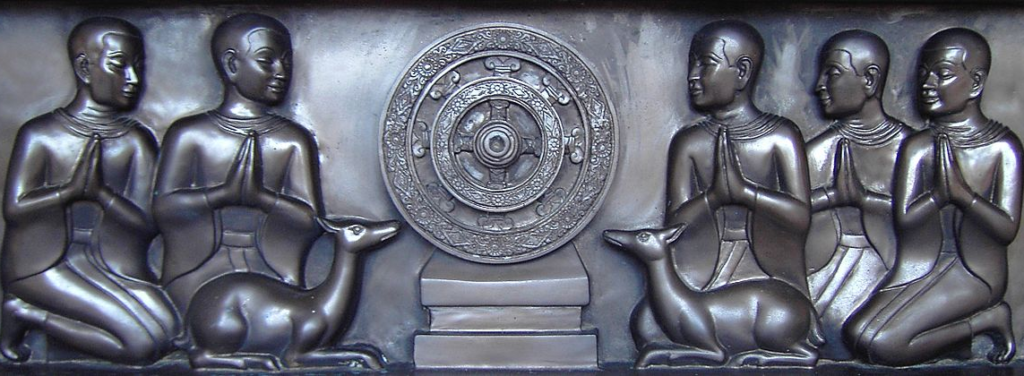
The Five Bhikkhus (Pañca-bhikkhavāḥ): The first disciples who became monks under Gautama Siddhartha (Shakyamuni) after his enlightenment, forming the earliest Sangha.
現代に生きる仏教の智慧と実践
釈迦、またはゴータマ・シッダールタは、紀元前5世紀に生きた仏教の開祖です。
彼の教えは、苦しみの原因とその克服に関する深い洞察を提供し、世界中の多くの人々に普遍的な真理を伝えてきました。
悟りとは、仏教の中心的な概念であり、無明の束縛から解放された究極の精神的覚醒状態を指します。
釈迦は、瞑想、道徳的な生活、そして智慧の開発を通じて、この悟りを得る道を示しました。
現代社会は、古代インドの時代とは異なる多くの挑戦に直面していますが、釈迦の教えは今もなお関連性を持ち続けています。
ストレス、不安、そして日常生活の忙しさに直面する中で、多くの人々は心の平穏を求めています。
仏教の智慧は、心を落ち着かせ、内面の平和を見つけるための実践的なアプローチを提供します。
瞑想やマインドフルネスの実践は、現代人が直面する精神的な苦痛を軽減するのに役立ち、仏教の教えがどのように現代の生活に適用できるかの一例です。
釈迦の教えは、単なる宗教的な信条を超え、個人の内面的な成長と自己発見の旅を促進します。
彼の智慧は、道徳的な価値観と個人的な責任を重んじ、苦しみの原因を理解し、それを克服する方法を教えてくれます。
仏教の実践は、自己の行動と思考に対する深い洞察を促し、人間関係や社会的な調和にも積極的な影響を与えます。
今日、釈迦の教えは、多くの人々が精神的な充実を追求し、より意味のある人生を生きるための指針となっています。
仏教の開祖である彼の智慧は、時代を超えて受け継がれ、現代に生きる私たちにとっても、内面の平和と調和を見出すための貴重な資源となっています。
Wisdom and Practice of Buddhism in the Modern World
Gautama Siddhartha, also known as Shakyamuni, was the founder of Buddhism who lived in the 5th century BCE.
His teachings offer profound insights into the causes of suffering and how to overcome them, conveying universal truths to people worldwide.
Enlightenment is central to Buddhism, signifying the ultimate state of spiritual awakening freed from the bondage of ignorance.
Through meditation, ethical living, and the development of wisdom, Shakyamuni showed the path to attain this enlightenment.
Modern society faces numerous challenges distinct from ancient India, yet Shakyamuni’s teachings continue to remain relevant.
Amidst stress, anxiety, and the busyness of daily life, many seek inner peace.
Buddhist wisdom provides a practical approach to calm the mind and find inner peace.
Practices like meditation and mindfulness help alleviate the mental distress faced by modern individuals, illustrating how Buddhist teachings can be applied in contemporary life.
Beyond mere religious beliefs, Shakyamuni’s teachings promote personal growth and the journey of self-discovery.
His wisdom values moral principles and personal responsibility, teaching how to understand the causes of suffering and overcome them.
Buddhist practices foster deep insights into one’s actions and thoughts, positively influencing relationships and social harmony.
Today, Shakyamuni’s teachings serve as guidelines for many seeking spiritual fulfillment and living a meaningful life.
His wisdom, inherited across generations, remains a valuable resource for us living in the modern world, helping us find inner peace and harmony.

Vulture Peak in Rajgir
釈迦の一生と仏教の歴史的展開
釈迦、またはゴータマ・シッダールタは紀元前5世紀にインドで生まれ、後に仏教の開祖となりました。
彼の人生は、豪華な宮殿の生活を捨て、真理を求める苦行僧としての転身を経て、最終的に悟りを得るという道程を辿ります。
この悟り、すなわち「覚醒」は、煩悩や苦しみの根源を見極め、それを超えた究極の平和と知識の状態を指します。
仏教は釈迦の死後、彼の教えが経典に記され、弟子たちによって広められることで、インドをはじめとしたアジア各地に伝播しました。
仏教はやがて様々な文化や思想との出会いを経て、多くの流派へと分化し、それぞれが独自の教義や実践を展開していきます。
テーラワーダ仏教、大乗仏教、チベット仏教はその代表的な例であり、それぞれが異なる解釈や修行法を持ちますが、すべては釈迦の教えに根ざしています。
釈迦の教えは、四諦、八正道、縁起、無我といった基本的な概念に基づいており、これらはすべての仏教徒にとっての核心的な教義です。
四諦は苦の実存、苦の原因、苦の終息、苦を終わらせる道を示し、八正道は正しい理解、正しい思考、正しい言葉、正しい行動、正しい生活、正しい努力、正しい念慮、正しい集中を通じて苦を終わらせる実践的な指南を提供します。
仏教の歴史的展開は、その普遍的な教えがどのように異なる文化圏で受け入れられ、適応し、発展してきたかの物語です。
仏教は宗教的枠組みを超え、倫理的な生き方、心の平和を求める哲学として、世界中で多くの人々に影響を与え続けています。
仏教の伝播:釈迦から世界へ
釈迦、または仏陀として知られるこの偉大な教えの開祖は、紀元前6世紀に現在のネパールで生まれました。
彼の悟りの体験は、仏教の中核を形成し、彼の教えはやがてインドを越えて東アジア、東南アジア、さらには中央アジアを通じて世界中に広がりました。
仏教の歴史的展開は、釈迦の死後、弟子たちによって経典が編纂され、その教義が多様な文化や言語を通じて解釈され、形を変えていった過程を示しています。
仏教が伝播するにつれて、多様な流派が生まれました。
テーラワーダ仏教、大乗仏教、禅仏教、チベット仏教など、それぞれが独自の教義と実践を持ち、地域に根ざした文化と結びついて発展を遂げてきました。
これらの流派は、釈迦の悟りの教えをそれぞれの見解で捉え、信者たちにとって理解しやすい形で伝えています。
釈迦が説いた悟りとは、無明を超え、苦しみの原因を見極めることでした。
彼は、八正道を通じて、人々が苦しみから解放される道を示しました。
この道は、正しい見解、正しい思考、正しい言葉、正しい行動、正しい生活、正しい努力、正しい念慮、正しい集中を含み、個人が内面の平和を見出し、他者との調和を図るための指針となっています。
仏教の開祖である釈迦の教えは、単なる宗教的枠組みを超え、哲学や心理学、倫理学など多岐にわたる分野で影響を与えています。
その普遍的なメッセージは、個人の内面的な成長を促し、さまざまな文化や社会において人々の生き方に深い洞察を提供しています。
The Life of Buddha and the Historical Development of Buddhism
Siddhartha Gautama, also known as Shakyamuni Buddha, was born in India in the 5th century BCE and later became the founder of Buddhism.
His life journey involved renouncing a luxurious palace life to pursue asceticism in search of truth, culminating in his attainment of enlightenment.
Enlightenment, or “awakening,” refers to the ultimate spiritual state of transcending ignorance and the roots of suffering to achieve profound peace and knowledge.
After Buddha’s passing, his teachings were compiled into scriptures and spread by his disciples, eventually reaching across Asia, starting from India.
Buddhism diversified into various schools and sects through encounters with different cultures and philosophies, each developing its own doctrines and practices.
Theravada Buddhism, Mahayana Buddhism, and Tibetan Buddhism are prominent examples, each rooted in interpretations of Buddha’s teachings yet with distinct practices.
Central to Buddha’s teachings are fundamental concepts like the Four Noble Truths, the Noble Eightfold Path, Dependent Origination, and Anatta (non-self).
The Four Noble Truths identify the existence of suffering, its causes, its cessation, and the path to its cessation, while the Noble Eightfold Path offers practical guidance through right understanding, right thought, right speech, right action, right livelihood, right effort, right mindfulness, and right concentration to overcome suffering.
The historical spread of Buddhism illustrates how its universal teachings were accepted, adapted, and evolved across diverse cultural spheres.
Beyond a religious framework, Buddhism continues to influence people worldwide as a philosophy seeking ethical living and inner peace.
Spread of Buddhism: From Shakyamuni to the World
Shakyamuni, the revered founder known as the Buddha, was born in what is now Nepal in the 6th century BCE.
His experience of enlightenment formed the core of Buddhism, and his teachings eventually spread beyond India to East Asia, Southeast Asia, and further through Central Asia.
The historical development of Buddhism reveals how scriptures compiled by Buddha’s disciples after his death were interpreted across diverse cultures and languages, adapting and evolving over time.
As Buddhism spread, it gave rise to various sects.
Theravada Buddhism, Mahayana Buddhism, Zen Buddhism, Tibetan Buddhism, among others, each developed unique doctrines and practices deeply rooted in regional cultures.
These sects interpret Buddha’s teachings on enlightenment, which involves transcending ignorance to understand the root causes of suffering.
Through the Noble Eightfold Path, Buddha taught the way for individuals to be liberated from suffering.
This path encompasses right understanding, right thought, right speech, right action, right livelihood, right effort, right mindfulness, and right concentration, serving as guidelines for achieving inner peace and harmony with others.
The teachings of Shakyamuni, the founder of Buddhism, extend beyond mere religious frameworks, influencing fields such as philosophy, psychology, and ethics.
Its universal message promotes personal growth and offers profound insights into how people live across various cultures and societies.

The Bamboo Grove Monastery in Rajagaha
仏教の多様な流派と教義
釈迦、またはゴータマ・シッダールタは、紀元前5世紀に現在のネパールとインドの国境地域で生まれた歴史上の人物であり、仏教の開祖とされています。
彼は長い求道の旅の末に菩提樹の下で深い瞑想を行い、「悟り」という究極の真理の理解に到達しました。
この経験を通じて「仏陀」すなわち「目覚めた者」と呼ばれるようになり、その後の教えが仏教として知られるようになりました。
釈迦の教えは、苦しみの原因とそれを超える道を説くことに焦点を当てています。
彼は「四諦」と呼ばれる教義を説き、それは苦(苦悩の存在)、集(苦悩の原因)、滅(苦悩の終息)、道(苦悩を終わらせるための道)から成り立っています。
釈迦はまた、「八正道」という実践的な指針を提供し、倫理的な行動、正しい集中、そして智慧の開発を促しました。
仏教は釈迦の死後、弟子たちによって広まり、様々な地域に伝播していきました。
この過程で、多様な文化や哲学的思想と融合し、様々な流派が生まれました。
大きく分けて、南伝仏教と北伝仏教という二つの大きな枝分かれがあります。
南伝仏教は上座部仏教とも呼ばれ、スリランカやタイ、ミャンマーなどで見られます。
北伝仏教は大乗仏教とも呼ばれ、中国、韓国、日本などで広まりました。
これらの流派は、基本的な教義には共通する部分が多いものの、修行の方法や経典の解釈、宗教的実践において多様性を持っています。
例えば、大乗仏教では菩薩の理想が強調され、一切の衆生の救済を目指す慈悲深い実践が重要視されます。
一方で、上座部仏教では個人の悟りを目指す実践が中心となっています。
このように、釈迦の基本的な教えは時間と共に展開し、異なる文化の中で独自の形を成してきました。
それぞれの流派は、教義や実践において独自の特色を持ちながらも、釈迦が達成した悟りという核心的な経験を尊重し続けています。
Various Schools and Doctrines of Buddhism
Siddhartha Gautama, also known as Shakyamuni Buddha, is a historical figure born in the border regions of present-day Nepal and India in the 5th century BCE, revered as the founder of Buddhism.
After embarking on a long spiritual journey, he attained profound meditation under the Bodhi tree, achieving an ultimate understanding known as “enlightenment.”
Through this experience, he came to be known as the “Buddha,” or the “Awakened One,” and his teachings subsequently became known as Buddhism.
The core focus of Buddha’s teachings revolves around identifying the causes of suffering and the path to transcend it.
He expounded the doctrine known as the “Four Noble Truths,” comprising suffering (the existence of suffering), its origin (the cause of suffering), cessation (the end of suffering), and the path (the way to end suffering).
Additionally, Buddha provided a practical guide known as the “Eightfold Path,” advocating ethical conduct, right concentration, and the development of wisdom.
Following Buddha’s passing, his teachings spread through his disciples, adapting and integrating with various cultures and philosophical thoughts, giving rise to diverse Buddhist schools.
Broadly categorized, there are two main branches: Theravada Buddhism (Southern Buddhism), prevalent in Sri Lanka, Thailand, Myanmar, and Mahayana Buddhism (Northern Buddhism), which spread to China, Korea, Japan, and beyond.
These schools share fundamental doctrines while exhibiting diversity in practices, interpretations of scriptures, and religious rituals.
For instance, Mahayana Buddhism emphasizes the Bodhisattva ideal, focusing on compassionate practices aimed at the salvation of all sentient beings.
In contrast, Theravada Buddhism centers on individual enlightenment as its core practice.
Over time, Buddha’s foundational teachings have evolved within different cultural contexts, each school maintaining reverence for the core experience of enlightenment achieved by Buddha.

Vulture Peak in Sravasti
釈迦の悟りと現代人へのメッセージ
釈迦、または仏陀として知られるこの偉大な教師は、紀元前6世紀にインドで生まれ、仏教の開祖となりました。
彼の悟りの瞬間は、人間の精神的な目覚めと自己実現の象徴として、今なお多くの人々に影響を与えています。
釈迦の悟りが教える人生の智慧は、欲望や執着から解放され、内なる平和を見出すことの重要性を強調しています。
彼の教えは、苦しみの原因となる煩悩を克服し、心の平穏を得る方法を提案しており、これは現代社会においても非常に関連性があります。
釈迦は、仏教の教義を広めるために一生を捧げ、多くの弟子たちを導きました。
彼の遺産は、慈悲、智慧、そしてすべての生きとし生けるものへの敬意という形で、今日の世界に受け継がれています。
現代人が直面するストレスや不安に満ちた生活の中で、釈迦のメッセージは心のバランスを取り戻し、意識を高めるための指針となり得ます。
仏教の開祖としての釈迦の遺産は、個人の精神的成長だけでなく、社会全体の調和と平和への貢献としても評価されています。
釈迦の悟りとは、真理を見極め、現実をそのまま受け入れることから始まります。
この洞察は、私たちが自己中心的な思考から脱却し、より広い視野を持つことを促します。
これにより、他者への共感や理解が深まり、人間関係の改善にもつながるのです。
現代人へのメッセージとして、釈迦の教えは、忙しい日常を超えて、自己探求と内面の平和を求める旅を始めるきっかけを与えてくれるでしょう。
釈迦の悟りが教える人生の智慧
釈迦とは、紀元前6世紀に生まれた仏教の開祖であり、その教えは今日に至るまで多くの人々に影響を与え続けています。
彼が悟りを開いたとされる瞬間は、人生における真理と智慧を見つめ直すきっかけを私たちに提供してくれるのです。
釈迦の悟りとは、単なる知識の獲得を超え、実存的な理解と深い内省によって得られるもので、それは現代人にとっても非常に有益なメッセージを含んでいます。
釈迦が説いた四諦や八正道などの教えは、苦しみの原因を理解し、それを克服する方法を示しています。
これらの教えは、現代社会で直面するストレスや不安といった問題に対しても、心の平穏を保つ手助けとなるでしょう。
仏教の開祖としての釈迦の遺産は、個人の内面的成長はもちろん、社会全体の調和に寄与する智慧として、今日も私たちの生活の中に息づいています。
仏陀の悟りから学ぶべきは、外部の状況に振り回されることなく、自身の心を見つめ、本質的な幸福を追求する姿勢です。
釈迦が示した道は、自己の限界を超えて成長するための道標となり、私たち一人ひとりの人生において重要な指針を提供してくれます。
仏教の開祖としての釈迦の遺産と現代社会
釈迦、またはゴータマ・シッダールタは、紀元前5世紀に生きた歴史上の人物であり、仏教の創始者として広く尊敬されています。
彼の人生と教えは、無数の人々に影響を与え、特に「悟り」という概念は今なお多くの人々にとって重要な意味を持っています。
釈迦は菩提樹の下で深い瞑想に入り、人生の苦しみの原因とそれを克服する道を見出しました。
これが「悟り」と呼ばれる状態であり、彼はこれを通じて「仏陀」となりました。
釈迦の悟りによって明らかにされた教えは、苦しみの四貴諦と、それを克服する八正道として知られています。
これらは、仏教の核心をなす教義であり、現代社会においても人々が内面の平和を見つけるための重要な指針となっています。
釈迦のメッセージは、単に宗教的な枠組みを超え、個人の精神的成長や自己理解を促進する普遍的な智慧として受け入れられています。
現代社会は、物質的な豊かさと技術的進歩によって多くの利便性を享受していますが、同時にストレスや不安、孤独感といった精神的な問題も増加しています。
釈迦の教えは、このような現代の課題に対しても有効な解決策を提供してくれます。
仏教の開祖としての彼の遺産は、人間が真の幸福を見つけ、心の平和を実現するための道を照らしています。
釈迦の悟りが示す人生の智慧は、自己の心と向き合い、内なる声に耳を傾けることの大切さを教えています。
また、他者への慈悲と共感、そして自己と世界との調和を求めることで、より充実した人生を送ることができると説いています。
これらの教えは、現代人が直面する精神的な苦悩に対する洞察と解決策を提供し、多くの人々にとって心の支えとなっています。
仏教の開祖としての釈迦の遺産は、千年以上にわたって人類の精神文化を形作ってきました。
現代社会においても、彼の教えは変わらぬ価値を持ち続け、個人の内面的な成長と社会全体の調和に寄与しています。
釈迦の智慧は、今日に生きる私たちにも重要なメッセージを伝えており、その遺産は今後も長く受け継がれていくでしょう。
The Message of Buddha’s Enlightenment to Contemporary People
Shakyamuni, also known as the Buddha, was born in India in the 6th century BCE and is revered as the founder of Buddhism.
The moment of his enlightenment continues to resonate with many as a symbol of spiritual awakening and self-realization.
The wisdom of life that Buddha’s enlightenment teaches emphasizes the importance of finding inner peace by freeing oneself from desires and attachments.
His teachings focus on overcoming the afflictions that cause suffering and achieving mental tranquility, which remain highly relevant in today’s society.
Buddha dedicated his life to spreading the doctrine of Buddhism and guiding numerous disciples.
His legacy endures today in the form of compassion, wisdom, and reverence for all living beings.
In the midst of the stressful and anxiety-filled lives faced by contemporary people, Buddha’s message can serve as a guide to restoring mental balance and elevating consciousness.
Buddha’s Wisdom of Life
Buddha, born in the 6th century BCE, is the founder of Buddhism whose teachings have profoundly influenced countless individuals to this day.
The moment he attained enlightenment offers us a chance to re-examine truths and wisdom in life.
Buddha’s enlightenment transcends mere acquisition of knowledge; it is attained through existential understanding and deep introspection, offering valuable lessons for modern people.
His teachings such as the Four Noble Truths and the Eightfold Path elucidate understanding the causes of suffering and how to overcome them.
These doctrines constitute the core of Buddhism, offering crucial guidance for individuals in finding inner peace even in contemporary society.
Buddha’s message transcends religious frameworks to be embraced as universal wisdom that promotes personal spiritual growth and self-understanding.
Contemporary society, despite benefiting from material wealth and technological advancements, faces increasing challenges like stress, anxiety, and loneliness.
Buddha’s teachings provide effective solutions to these modern issues.
His legacy as the founder of Buddhism illuminates the path for humans to find true happiness and achieve inner peace.
Buddha’s enlightenment teaches the importance of facing one’s own mind and listening to the inner voice.
Moreover, it advocates compassion and empathy towards others and seeks harmony between oneself and the world, leading to a more fulfilling life.
These teachings offer insights and solutions to the psychological sufferings faced by contemporary individuals, serving as a source of mental support for many.
As the founder of Buddhism, Buddha’s legacy has shaped humanity’s spiritual and cultural heritage for over a millennium.
In today’s society, his teachings continue to hold invaluable significance, contributing to personal inner growth and societal harmony.
Buddha’s wisdom imparts important messages to us living today, and his legacy will continue to be passed down for generations to come.

Nirvana, generally a concept in Hinduism, Jainism, and Buddhism, refers to a state liberated from the cycle of repeated rebirths.
まとめ:釈迦の教えと悟りの実践
釈迦、または仏陀として知られるこの偉大な存在は、仏教の開祖として尊敬されています。
彼の教えは、2500年以上の時を超えて現代社会にも適用可能であり、多くの人々にとって人生の指針となっています。
特に、釈迦が得た悟りという経験は、内面の平和と自己理解を深めるための重要な概念です。
釈迦の教えの中心には、人間の苦しみの原因とその克服方法があります。
彼は、人生における苦しみは欲望や執着から生じると説き、それらを手放すことで悟りに至ることができると教えました。こ
の教えは、現代のストレスが多い生活においても、精神的なバランスを保つ上で非常に有効です。
また、釈迦は、悟りを通じて人生の真の価値と目的を見出すことができると説いています。
悟りとは、真実を見極める力、つまり世界と自己をありのままに理解することです。
この深い自己理解は、私たちがより意味のある人生を送るための基盤となります。
仏教の開祖である釈迦の教えは、個人の内面的な成長だけでなく、社会全体の調和にも貢献する普遍的な価値を持っています。
彼の示した悟りの道は、自己を超え、より広い視野で世界を見るための鍵となり得るのです。
仏教の開祖、釈迦の教えの現代への適用
釈迦、または仏陀として知られるこの偉大な精神的指導者は、仏教という広範な宗教的・哲学的体系の礎を築いた人物です。
彼の教えは、紀元前6世紀の古代インドで始まり、今日に至るまで世界中で尊重され続けています。
釈迦が悟りを開いた後、彼は苦しみの原因とそれを克服する方法を説明する「四諦」という教義を伝えました。
これは、人生における苦悩の存在、その苦悩の原因、苦悩の終わり、そして苦悩を終わらせるための道を示す「八正道」を含んでいます。
現代社会において、釈迦の教えはストレスや不安の多い生活に対する洞察を提供します。
彼の教えに基づく瞑想実践は、精神的な平和を求める多くの人々にとって有益であると考えられています。
また、仏教の開祖である釈迦の思想は、自己啓発や心理療法の分野でも影響を与えており、マインドフルネスやコンパッション(慈悲)といった概念が注目されています。
釈迦の悟りとは、単に宗教的な啓示に留まらず、人生の価値と目的を見出すための普遍的な真理を追求する過程です。
彼の示した悟りの経験は、内省と自己認識を深めることで、個人の成長と変化を促すことができるとされています。
釈迦の教えを現代の生活に適用することで、私たちはより調和のとれた、意味のある生き方を目指すことができるのです。
釈迦の悟りを通じて見る人生の価値と目的
釈迦、仏教の開祖として知られるこの偉大な存在は、人間の苦しみの原因とその克服の道を説いた。
彼が得た「悟り」とは、真理を見極める究極の覚醒状態を指す。
釈迦の教えは、単なる宗教的枠組みを超え、現代の多様な生活にも深く根ざした普遍的な価値を持っている。
生きる目的と人生の価値を見出すために、私たちは彼の教えに目を向けることができる。
仏陀の示した八正道は、道徳的な行い、正しい集中、そして智慧の培養を通じて、心の平穏と解脱を目指すものだ。
これらは今日においてもストレスや苦悩を抱える現代人にとって、内面の平和を得るための貴重な指針となる。
また、釈迦が説いた四諦は、存在の苦しみを理解し、その克服を目指す実践的な教えとして受け入れられている。
釈迦の悟りを通じて、私たちは人生の真の価値を見出し、目の前の現実に対しても意義を見出すことができる。
仏教の教えは、物質的な富や成功だけが人生の目的ではないことを教えてくれる。
むしろ、内なる平和と他者への慈悲を通じて、より充実した人生を送ることができるのだ。
このように、釈迦の悟りは、千年以上経た現代においても、私たちの生活に深い洞察を与えてくれる。
それは、人間としての存在を豊かにし、より良い世界を築くための基盤となる。
仏教が持つ普遍的な教えは、時代を超えた人生の価値と目的を照らし出してくれるのである。
Summary: The Teachings of Shakyamuni Buddha and the Practice of Enlightenment
Shakyamuni Buddha, also known simply as the Buddha, is revered as the founder of Buddhism. His teachings have transcended over 2500 years and continue to serve as a guiding principle for many in contemporary society. Particularly, the experience of enlightenment that Buddha attained remains a crucial concept for deepening inner peace and self-understanding.
Central to Buddha’s teachings is the understanding of the causes of human suffering and methods to overcome them. He taught that suffering arises from desires and attachments, and that liberation can be achieved through letting go of these. This teaching is highly relevant in today’s stressful lives, offering effective means to maintain mental balance.
Moreover, Buddha emphasized that through enlightenment, one can discover the true value and purpose of life. Enlightenment involves discerning the truth and understanding the world and oneself as they truly are. This profound self-awareness forms the foundation for living a more meaningful life.
The legacy of Shakyamuni Buddha, as the founder of Buddhism, holds universal value contributing not only to individual spiritual growth but also to societal harmony. His path to enlightenment provides a key to transcending oneself and gaining a broader perspective on the world.
Applying Buddha’s teachings to contemporary life provides insights into addressing issues like stress and anxiety. Meditation practices based on his teachings are believed to be beneficial for seeking inner peace amidst life’s challenges.
Furthermore, Buddha’s philosophy influences fields such as self-development and psychotherapy, highlighting concepts like mindfulness and compassion.
Enlightenment, as taught by Buddha, is a journey to pursue universal truths beyond mere religious doctrine. It encourages personal growth and transformation through introspection and self-awareness.
By focusing on Buddha’s teachings, individuals can find the purpose and value of life, fostering both personal fulfillment and societal harmony. These teachings remind us that material wealth and success alone do not define life’s purpose. Instead, true fulfillment comes from inner peace and compassion towards others.
In this way, Buddha’s enlightenment continues to offer profound insights into our contemporary lives, enriching our existence as humans and laying the groundwork for a better world.
The universal teachings of Buddhism illuminate the timeless values and purposes of life, transcending ages and guiding humanity towards greater fulfillment.
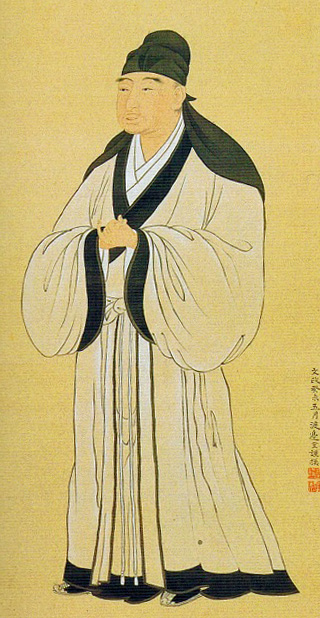
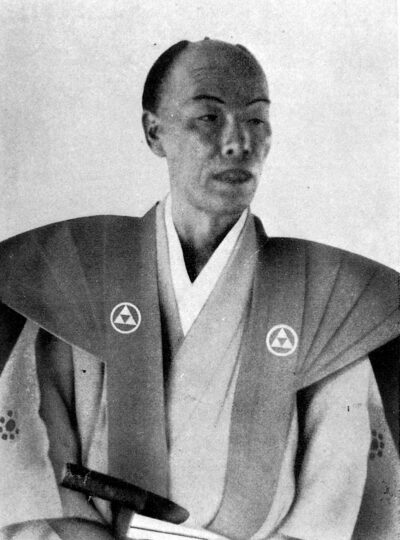
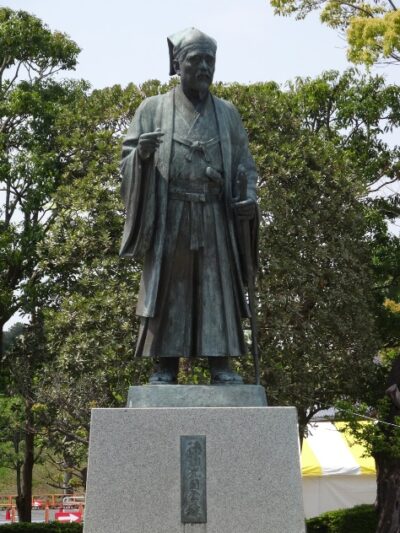
Warning: Undefined variable $comment_form_sns_tags in /home/ktsky/philosophy-kayak.com/public_html/wp-content/themes/shaper/comments.php on line 27